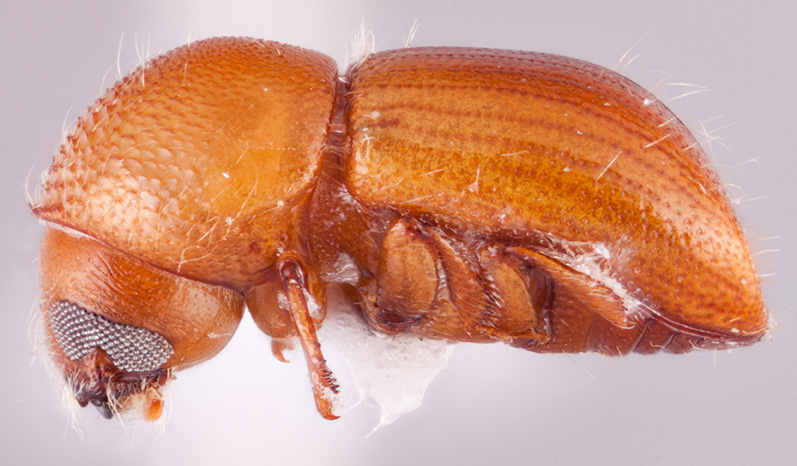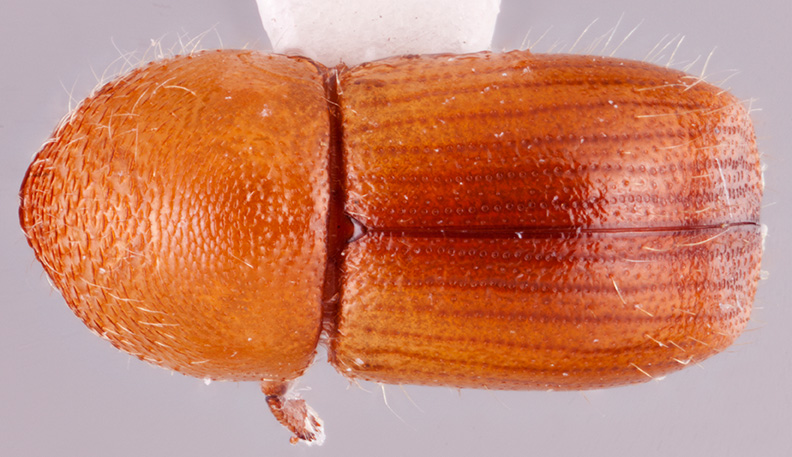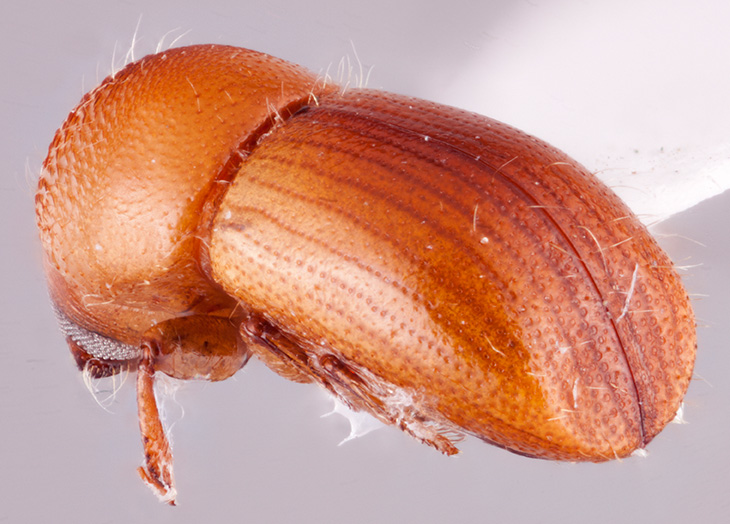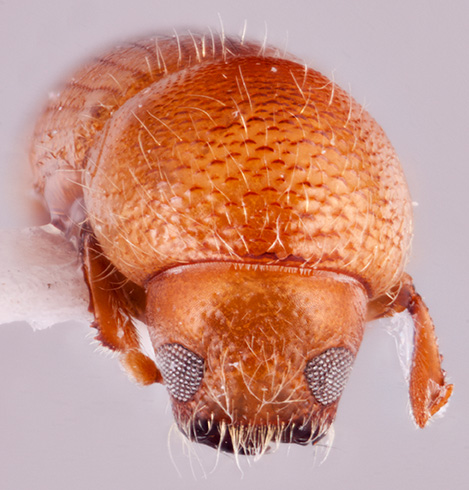Beaverium lantanae
|
Beaverium lantanae lateral; R.K. Osborn |
|
Beaverium lantanae dorsal; R.K. Osborn
|
|
Beaverium lantanae declivity; R.K. Osborn |
|
Beaverium lantanae frontal; R.K. Osborn |
Taxonomic history
Xyleborus lantanae Eggers, 1930: 180.
Ambrosiodmus lantanae (Eggers): Wood and Bright, 1992: 675.
Beaverium lantanae (Eggers): Beaver et al., 2014: 32.
Diagnosis
4.1−4.5 mm long (mean = 4.26 mm; n = 5); 2.2−2.28 times as long as wide. This species is distinguished by the small size; elytralelytral:
pertaining to the elytra
discdisc:
the flat central upper surface of any body part (e.g. pronotum and elytra) convexconvex:
convexconvex:
appearing rounded , without a transverse saddle-like depression; declivitaldeclivital:
, without a transverse saddle-like depression; declivitaldeclivital:
pertaining to the elytral declivity
posterolateral margins costate, never carinate; and boundary between elytralelytral:
pertaining to the elytra
discdisc:
the flat central upper surface of any body part (e.g. pronotum and elytra) and declivitydeclivity:
and declivitydeclivity:
downward slope of either the pronotum or elytra
 smoothly rounded.
smoothly rounded.
May be confused with
Distribution
India (Karnataka, Nicobar Is., West Bengal), Myanmar, Thailand, Vietnam
Host plants
recorded from six genera in five families in India (Beeson 1961Beeson 1961:
Beeson CFC. 1961. The ecology and control of the forest insects of India and the neighbouring countries. 2nd edition. Government of India, New Delhi, 767 pp.), and evidently polyphagous
DNA data
specimens not available for sequencing





